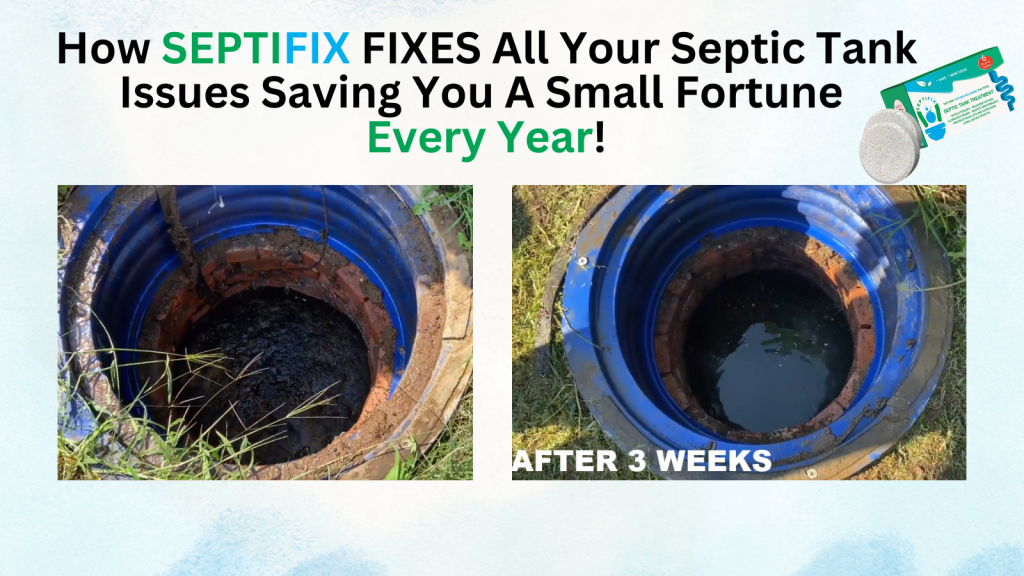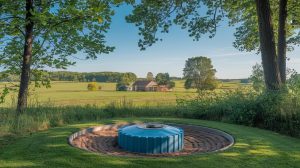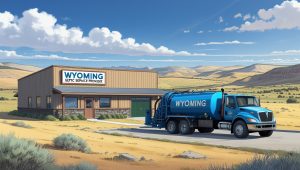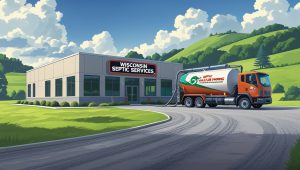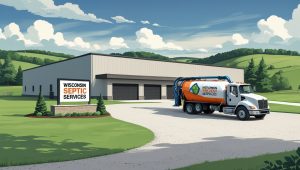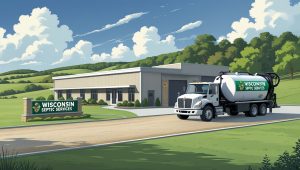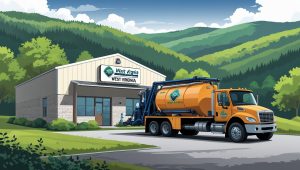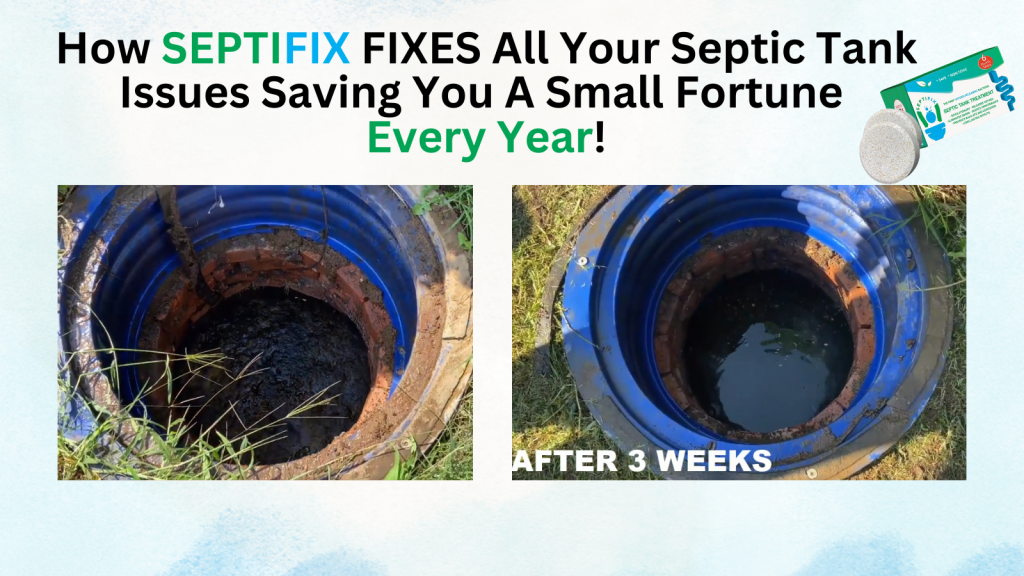Constructed wetlands for wastewater treatment are gaining popularity as a sustainable, eco-friendly alternative to traditional septic systems. By harnessing the natural filtration power of plants, soil, and microorganisms, these systems effectively treat wastewater while promoting environmental health. In this article, we’ll explore how constructed wetlands work, their benefits, and whether they might be the right solution for your property.
Table of Contents
- What are Constructed Wetlands?
- Benefits of Using Constructed Wetlands for Wastewater Treatment
- How Constructed Wetlands Work
- Is a Constructed Wetland Right for Your Property?
- Comparing Constructed Wetlands with Traditional Septic Systems
- Which System is Right for You?
- Environmental Impact and Regulations For Constructed Wetlands
- Septifix
- Septic Permit Links by State
What are Constructed Wetlands?
Constructed wetlands are engineered systems that replicate the natural processes of wetland ecosystems to treat wastewater. Unlike traditional septic systems, which rely on tanks and drain fields, constructed wetlands use vegetation, soil, and microorganisms to filter out contaminants. These systems consist of shallow basins or trenches filled with plants such as cattails, bulrushes, and grasses, which help remove pollutants through physical, chemical, and biological processes.
The key difference between constructed wetlands and natural wetlands is that constructed wetlands are specifically designed for wastewater treatment. They are built in areas with poor drainage or where there’s a need for an efficient, low-maintenance wastewater treatment option. When properly designed and maintained, constructed wetlands can effectively handle both residential and commercial wastewater while minimizing environmental impact.
Benefits of Using Constructed Wetlands for Wastewater Treatment
Constructed wetlands offer several advantages over traditional septic systems, making them an attractive option for eco-conscious homeowners. Here are some of the key benefits:
1. Environmental Impact
Constructed wetlands are environmentally friendly. By mimicking natural filtration processes, they help improve water quality by removing contaminants such as nitrogen, phosphorus, and pathogens. Additionally, they provide habitats for wildlife and support biodiversity, making them a valuable addition to any landscape.
2. Cost-Effective
While the initial installation of a constructed wetland may require more investment compared to traditional septic systems, the long-term costs can be lower. These systems typically require less maintenance and have fewer repair needs, reducing operational costs over time. The plants used in the wetland naturally help break down organic matter, reducing the need for expensive chemical treatments.
3. Sustainability
Constructed wetlands contribute to sustainability by using natural processes to treat wastewater. Unlike conventional septic systems that can sometimes contribute to groundwater contamination, constructed wetlands are designed to minimize environmental harm. Their ability to treat wastewater without using chemical additives makes them an attractive option for those aiming for a more eco-friendly lifestyle.
4. Low Maintenance
Once established, constructed wetlands require relatively little maintenance. Routine checks of the plants and occasional cleaning of the system are usually sufficient to ensure optimal performance. This contrasts with traditional septic systems, which require more frequent inspections and pumping.
5. Improved Water Quality
Constructed wetlands effectively filter out organic pollutants, nutrients, and pathogens from wastewater. This leads to cleaner water being returned to the environment, reducing the risk of contamination in nearby streams, rivers, or groundwater sources. Additionally, these systems can help prevent the spread of harmful bacteria and viruses, improving overall public health.
In short, constructed wetlands provide a sustainable, efficient, and cost-effective solution for wastewater treatment, making them a promising alternative to traditional septic systems.
How Constructed Wetlands Work
Constructed wetlands treat wastewater through a combination of physical, chemical, and biological processes, all of which work together to remove pollutants and purify the water. Here’s how these systems function:
1. Physical Filtration
When wastewater enters a constructed wetland, it first passes through the soil and plant roots. The physical structure of the soil helps trap larger particles, such as sediments and debris, while plants slow down the flow of water, allowing more time for the pollutants to settle. This filtration process removes solid waste and larger contaminants from the water.
2. Chemical Treatment
As water moves through the wetland, chemical reactions take place in the soil. The microorganisms living in the soil help break down organic compounds, turning them into harmless substances. For example, nitrogen compounds are converted into nitrogen gas through a process called denitrification, which prevents harmful nitrogen from leaching into the groundwater or surrounding environment.
3. Biological Filtration
The plants in the constructed wetland play a crucial role in the biological treatment of wastewater. Their roots provide a surface for bacteria and other microorganisms that feed on the organic matter in the wastewater. These microbes break down the organic pollutants, such as oils, fats, and proteins, turning them into simpler, less harmful compounds. This biological filtration process is a key factor in ensuring the treated water is safe to be released into the environment.
4. Types of Constructed Wetlands
There are two main types of constructed wetlands: surface flow and subsurface flow.
- Surface Flow Wetlands: In this system, water flows across the surface of the wetland and is treated by plants and microorganisms. These are more commonly used in areas with plenty of space, as they require a large surface area.
- Subsurface Flow Wetlands: Here, the water flows below the surface, through gravel or other materials. This type is less visible and can be more effective at preventing odors. It is commonly used in smaller residential settings.
Both systems are effective at treating wastewater, but the choice between them depends on factors like space availability, climate, and wastewater volume.
Constructed wetlands provide an efficient and natural way to treat wastewater, making them a sustainable alternative to traditional septic systems.
Is a Constructed Wetland Right for Your Property?
Before deciding to install a constructed wetland for wastewater treatment, it’s important to consider several factors that can influence the system’s effectiveness and feasibility for your property. Here’s what you need to evaluate:
1. Space Requirements
Constructed wetlands need a significant amount of space for proper installation, especially surface flow systems. These wetlands require a large area to accommodate the plants and ensure sufficient treatment of wastewater. Typically, you’ll need at least half an acre of land for an effective system, but the space required can vary depending on the size of your household and the amount of wastewater generated.
Subsurface flow wetlands take up less surface area but still require adequate space for the gravel and plant system to work effectively. If your property has limited space, a subsurface flow system might be the better option.
2. Soil and Climate Conditions
Constructed wetlands work best in areas with soils that drain well, as water must flow through the system to be treated effectively. In regions with clay-heavy soils or high groundwater levels, it may be necessary to modify the site or use specialized systems to ensure proper drainage.
Additionally, the climate plays a role in the system’s success. Constructed wetlands are more effective in areas with moderate temperatures, as the plants and microorganisms require certain conditions to thrive. In colder climates, special considerations might be needed to protect the system from freezing, while hotter climates may demand a more drought-resistant plant selection.
3. Wastewater Volume
The size and design of the constructed wetland depend on the volume of wastewater your household or property generates. For larger households or businesses, you may need a more extensive wetland system to handle the wastewater load. A professional assessment can help determine the correct size and configuration based on your specific needs.
4. Local Regulations
Before installing a constructed wetland, it’s important to check local regulations and obtain the necessary permits. Some areas may have strict guidelines for wastewater treatment systems, especially for large-scale or commercial applications. Consulting with local authorities or an expert can help ensure your system complies with zoning, health, and environmental regulations.
5. Maintenance Considerations
Although constructed wetlands require relatively low maintenance, they still need periodic care. Regular monitoring of plant health, checking for blockages in the system, and occasional plant replacement may be necessary. If you’re looking for a system that requires minimal attention, this can be an advantage. However, keep in mind that neglecting maintenance could result in reduced system efficiency.
6. Aesthetic and Environmental Value
One of the unique advantages of constructed wetlands is their aesthetic value. These systems can enhance the landscape by adding greenery, providing wildlife habitat, and offering natural beauty. If you’re looking for a functional yet attractive solution, a constructed wetland can serve as both a wastewater treatment system and a landscape feature.
In summary, if you have adequate space, the right soil and climate conditions, and are willing to invest in initial installation and maintenance, a constructed wetland can be a highly effective and eco-friendly wastewater treatment solution for your property.
Comparing Constructed Wetlands with Traditional Septic Systems
When deciding between a constructed wetland and a traditional septic system, it’s important to understand how they compare in terms of cost, environmental impact, and long-term maintenance. Below, we break down the key differences:
1. Installation Costs
- Constructed Wetlands: The initial setup cost of a constructed wetland can be higher due to excavation, planting, and site preparation. However, long-term operational costs are generally lower due to minimal energy and maintenance requirements.
- Traditional Septic Systems: These systems often have a lower initial installation cost but can become more expensive over time due to frequent pumping, repairs, and the need for periodic upgrades.
2. Environmental Impact
- Constructed Wetlands: These systems naturally filter wastewater without relying on chemical treatments or energy-intensive processes. They also provide a habitat for wildlife and contribute to local biodiversity.
- Traditional Septic Systems: While effective, septic systems can sometimes leak or overflow, potentially contaminating groundwater and nearby water sources if not properly maintained.
3. Space Requirements
- Constructed Wetlands: Require significantly more space, especially surface flow systems. This can be a limiting factor for smaller properties.
- Traditional Septic Systems: Are generally more compact and can be installed on smaller plots of land, making them a better option for properties with limited space.
4. Maintenance Needs
- Constructed Wetlands: Require minimal maintenance, mostly focusing on plant health, occasional system inspections, and ensuring proper water flow.
- Traditional Septic Systems: Require regular inspections, pumping every few years, and potential repairs, making long-term maintenance more costly.
5. Lifespan
- Constructed Wetlands: With proper design and maintenance, constructed wetlands can last several decades, often outlasting traditional septic systems.
- Traditional Septic Systems: While durable, septic tanks and drain fields typically require significant repairs or replacements after 20–30 years.
6. Aesthetic Appeal
- Constructed Wetlands: Serve as functional and visually appealing landscape features, blending naturally into the surrounding environment.
- Traditional Septic Systems: Are usually buried underground and provide no visual or environmental enhancement.
Which System is Right for You?
- If you have ample space, are environmentally conscious, and prefer a low-maintenance, long-term solution, a constructed wetland is an excellent choice.
- If space is limited, or you need a lower upfront cost and a compact system, a traditional septic system may be more suitable.
In the end, both systems have their advantages and limitations. Your choice will depend on property size, budget, environmental priorities, and long-term goals.
Environmental Impact and Regulations For Constructed Wetlands
Constructed wetlands are not only effective for wastewater treatment but also offer significant environmental benefits. However, their installation and operation are subject to local, state, and federal regulations to ensure safety and environmental compliance.
1. Environmental Benefits
- Natural Water Filtration: Constructed wetlands use plants, soil, and microorganisms to naturally filter wastewater, reducing the need for chemical treatments.
- Reduced Pollution: These systems prevent contaminants like nitrogen, phosphorus, and harmful bacteria from entering groundwater or nearby water bodies.
- Wildlife Habitat: Constructed wetlands provide a thriving habitat for birds, insects, and aquatic life, contributing to local biodiversity.
- Carbon Footprint Reduction: Unlike traditional septic systems, wetlands require minimal energy to operate, reducing carbon emissions associated with wastewater treatment.
2. Regulatory Requirements
Before installing a constructed wetland, property owners must comply with local health department guidelines and environmental regulations. Key considerations include:
- Permits: Many states require permits for installing constructed wetlands, particularly if they will discharge treated water into surface water or groundwater sources.
- Design Standards: Specific design requirements, such as wetland size, plant selection, and soil composition, are often mandated by regulatory authorities.
- Water Quality Standards: Treated water must meet safety guidelines to prevent contamination of nearby water sources.
3. Site-Specific Regulations
Different regions have unique rules governing constructed wetlands. For example:
- Areas with high water tables may require special liners to prevent groundwater contamination.
- Cold climates may need additional design modifications to prevent system freezing during winter months.
- Some regions may restrict constructed wetlands near protected natural habitats or water bodies to prevent unintended ecological impacts.
4. Common Challenges in Compliance
- Permit Delays: Regulatory approval can take time, especially if additional environmental impact assessments are required.
- Public Perception: Misunderstandings about wetland systems may create resistance from neighbors or local authorities.
- Monitoring Requirements: Some jurisdictions may require periodic water quality testing to ensure the system meets environmental standards.
5. Working with Experts
To ensure compliance, it’s essential to consult with professionals experienced in designing and installing constructed wetlands. Environmental engineers, wastewater treatment specialists, and local authorities can guide you through the permitting process and help design a system that meets regulatory requirements.
By understanding both the environmental benefits and the legal responsibilities associated with constructed wetlands, property owners can make informed decisions and contribute to a cleaner, more sustainable future.
Septifix
